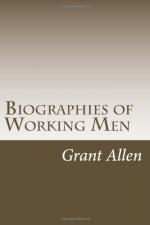In 1817, when he was just twenty-seven, he determined to set off to London. He took with him good introductions from Mr. Roscoe to Mr. Brougham (afterwards Lord Chancellor), to Christie, the big picture-dealer, and to several other influential people. Later on, Roscoe recommended him to still more important leaders in the world of art—Flaxman the great sculptor, Benjamin West, the Quaker painter and President of the Royal Academy, and others of like magnitude. Mr. Watson Taylor, a wealthy art patron, gave Gibson employment, and was anxious that he should stop in London. But Gibson wanted more than employment; he wanted to learn, to perfect himself, to become great in his art. He could do that nowhere but at Rome, and to Rome therefore he was determined to go. Mr. Taylor still begged him to wait a little. “Go to Rome I will,” Gibson answered boldly, “even if I have to go there on foot.”
He was not quite reduced to this heroic measure, however, for his Liverpool friends made up a purse of 150 pounds for him (we may be sure it was repaid later on); and with that comparatively large sum in his pocket the young stone-cutter started off gaily on his continental tour, from which he was not to return for twenty-seven years. He drove from Paris to Rome, sharing a carriage with a Scotch gentleman; and when he arrived in the Pope’s city (as it then was) he knew absolutely not a single word of Italian, or of any other language on earth save Welsh and English. In those days, Canova, the great Venetian sculptor, was the head of artistic society in Rome; and as all society in Rome is more or less artistic, he might almost be said to have led the whole life of the great and lively city. Indeed, the position of such a man in Italy resembles far more that of a duke in England than of an artist as we here are accustomed to think of him. Gibson had letters of introduction to this prince of sculptors from his London friends; and when he went to present them, he found Canova in his studio, surrounded by his numerous scholars and admirers. The Liverpool stone-cutter had brought a few of his drawings with him, and Canova examined them with great attention. Instinctively he recognized the touch of genius. When he had looked at them keenly for a few minutes, he turned kindly to the trembling young man, and said at once, “Come to me alone next week, for I want to have a talk with you.”
On the appointed day, Gibson, quivering with excitement; presented himself once more at the great master’s studio. Canova was surrounded as before by artists and visitors; but in a short time he took Gibson into a room by himself, and began to speak with him in his very broken English. Many artists came to Rome, he said, with very small means, and that perhaps might be Gibson’s case. “Let me have the gratification, then,” he went on, “of assisting you to prosecute your studies. I am rich. I am anxious to be of use to you. Let me forward you in your art as long as you stay in Rome.”




